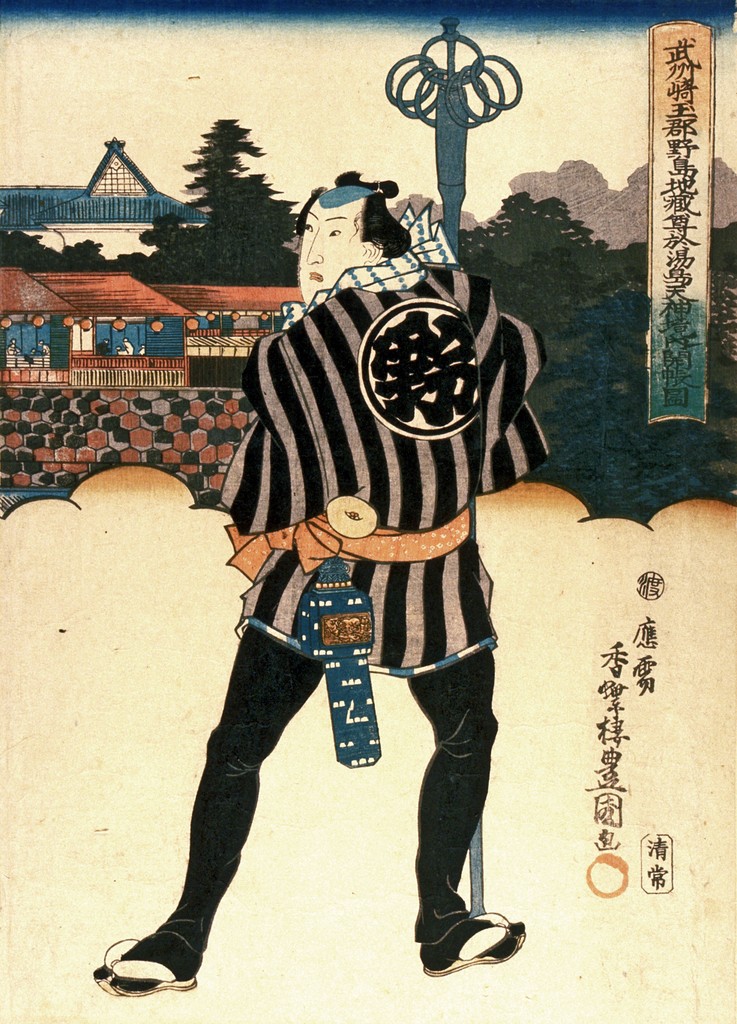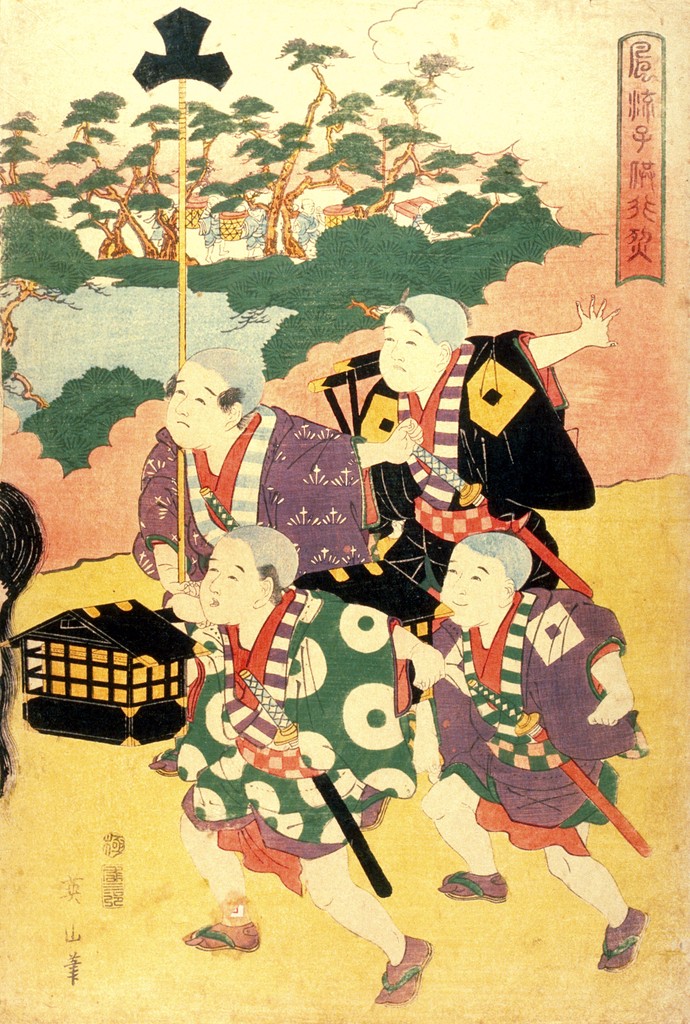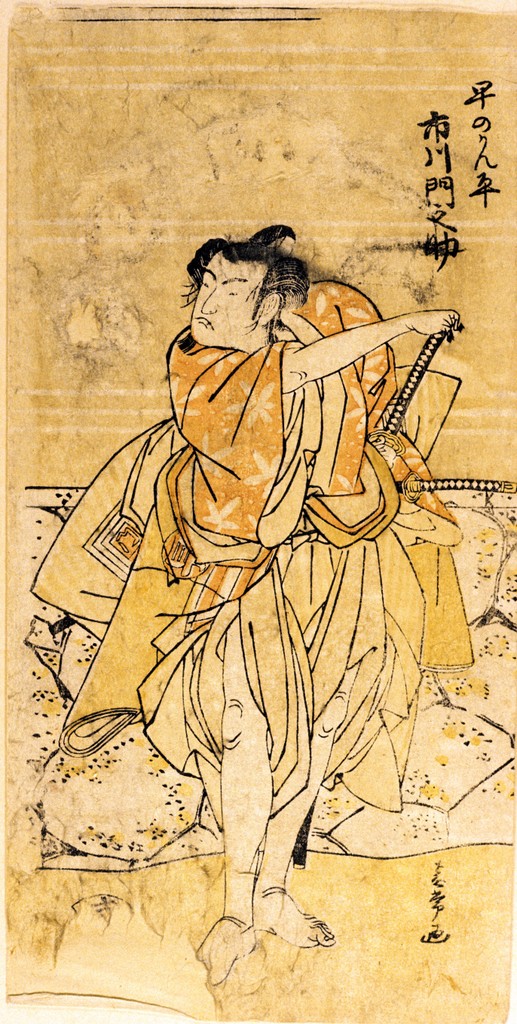By: Rachel Schultze
Overview
There are seven universally shared emotions- fear, joy, anger, surprise, sadness, contempt, and disgust. When we express these emotions, it provides feedback to the brain about the emotion being expressed, which in turn causes and intensifies the emotion, which is called the facial feedback effect. In terms of social psychology, this is very important and is also important in general everyday social interactions. Scenes in which you can see faces can provide contextual information for facial expression processing. More experienced artists are able to create faces with higher cognitive processing because they are able to think as well as see the face. When we perceive a face, we have increased blood flow to the FFA (fusiform facial area) found in the right hemisphere of the brain. This allows us to recognize and process facial expressions. In observing facial expressions of people in Japanese woodblock prints, some of these universal emotions are able to be found in their faces, dictating what emotion they may be feeling and helping to get into the head of the artist who created them. Analyzing them through this psychological lens can increase knowledge and understanding of these prints.
It is important to analyze both body language and facial expressions since it was found in previous studies that faces and bodies are processed as a single unit and not as separate entities by the brain. Therefore, when we look at a person (or a piece of art with a person), we are not just focusing on their face or their body, but rather a combination of the two in order to deduce what they may be feeling. Different aspects of the face such as eyes, chin, mouth, and head will be analyzed, as well as eyebrows. When we try to mask our feelings, we do it with the lower face, and the upper face is harder to use to mask our emotions. Therefore, analyzing the eyebrows in these prints can give way to many emotions. It is also important to analyze body language since it accounts for 60-65% of all communication. Typically, it is understood through posture, which one can read before even discerning context or subject matter when looking at art. Therefore, attempting to analyze body language in these woodblock prints can help strengthen the analyses of the facial expressions to come to conclusions about emotion and expression together.
The prints chosen were selected for two reasons- one given that they are all from Connecticut College’s own collection of woodblock prints, and I wanted to highlight work from my own institution, and secondly, each print has vivid and dramatic representations of the seven universally shared emotions. Once the foundation can be set with the seven universally shared expressions, it is easier and more fun to use the psychological principles to interpret further both facial expressions and body language. Also, each print is varied in the emotions, situations, and also people present, and I wanted to highlight different scenes rather than similar ones.
The challenge is to bring Western media and ideals into Eastern material. Everything must be questioned- how does it apply and how successful is it? It is easy to apply the seven universally shared emotions (since these can be applied across any culture), but it is more difficult to try to connect other aspects of body language and facial expression? It also begs the question: can we apply Western analyses of body language to Japanese culture, where the same body language could mean something completely different? In the end, what makes posture legible in an image depends on the fact that it is both socially and culturally understood- the viewer draws on this to draw conclusions.

Title: Untitled
Creator: Kunisada
Date: 1851-1853
Culture: Japan
Medium: Woodblock print; ink on paper
Dimensions: 36 x 24 cm
Repository: Wetmore Print Collection, Art History Dept., Cummings Arts Center, Connecticut College, New London
Credit line: Gift of Prof. Caroline Black, Botany Dept., Connecticut College
Description: In analyzing the faces of these women, all three have raised eyebrows, which is done when one is asking for attention from others, and also signals curiosity. All three womens’ heads are pointing in the same direction- we point at people and things that we are interested in, therefore, all three women are showing interest in something in the direction their heads are pointing. In terms of their mouths, all three women appear to have a bit of a smile. Smiling a sign of submission, indicates pleasure, that you are genuinely happy, enjoying others’ company, or amused by something. In terms of eyes, we look at things that we are interested in- all three women are looking in the same direction. We also use eyes to follow movement, so they might be tracking something with their eyes as well. Also, their lips all seem to be parted, indicating flirting, but also a sign that someone is speaking or desires to speak. This may indicate a theme of flirting and excitement. In terms of body language, the girl sitting down is sitting with her legs open in a relaxed position, indicating she is comfortable. Also, the three of their bodies are positioned in the same direction as their heads and eyes, indicating they are seeing something they are interested in. Therefore, one can see the merging between an aesthetically engaging depiction of three women and the possible deeper meaning discovered through the psychological applications.

Title: Gateman and Retainer
Creator: Toyokuni
Date: Unknown
Culture: Japan
Medium: Woodblock print; ink and color on paper
Dimensions: 35 x 25 cm
Repository: Wetmore Print Collection, Art History Dept., Cummings Arts Center, Connecticut College, New London
Credit line: Gift of Prof. Caroline Black, Botany Dept., Connecticut College
Description: In examining this woodblock print, the man’s eyebrows are raised. Notably, this signifies fear or surprise. It appears that his lips are turned downward, which indicates displeasure. His eyes, face, and head are all pointing in the same direction- indicating interest in something in that area. In terms of his body language, his legs are in a wider stance than his shoulders, making the body appear wider and bigger, a sign of power and dominance. Taking up more space shows domination, readying the body for a possible attack. Therefore, it can be concluded that this man is feeling a sense of danger, and bracing for possible conflict. He is caught by surprise and feels scared. Toyokuni was able to accurately capture the emotions behind a very intense situation. This is a probable conclusion given that retainers were elite swordsmen who remained behind to protect their master’s castle from enemy attack.

Title: Untitled
Creator: Yoshitora
Date: 1853-1859
Culture: Japan
Medium: Woodblock print; ink and color on paper
Dimensions: 34 x 24 cm
Repository: Wetmore Print Collection, Art History Dept., Cummings Arts Center, Connecticut College, New London
Credit line: Gift of Prof. Caroline Black, Botany Dept., Connecticut College
Description: In analyzing this samurai, his eyebrows are positioned at middle-lowered, which indicates that a person is angry, frustrated, or in deep concentration. It appears that his lips are pointed downwards, indicating displeasure, and he has a lowered head covering his neck with the chin. This is used as a defensive posture as a result of a perceived threat. Notably, it is a bit difficult to analyze his body language since he is seated on a horse, and his arms are holding the reins of the horse and holding his weapon. However, based on these facial expression analyses, it can be gathered that he is angry, displeased, and trying to protect himself from a threat, presumably, the man at the lower left of the woodblock print. The samurai is the main character of the woodblock and is portrayed as real and the hero of this work. The detail of the face adds to the full interpretation of the situation and contributes to the viewer’s experience of engaging with this woodblock print.

Title: Four Children Approaching Horse
Creator: Yeisan
Date: 1850
Culture: Japan
Medium: Woodblock print; ink and color on paper
Dimensions: 39 x 26 cm
Repository: Wetmore Print Collection, Art History Dept., Cummings Arts Center, Connecticut College, New London
Credit line: Gift of Prof. Caroline Black, Botany Dept., Connecticut College
Description: In analyzing the four boys together in this woodblock print, all of their legs are pointing towards the same direction, indicating they are all moving towards the same thing. In addition, their heads are also pointing in the same direction, indicating that whatever they are looking at is something desirable. They also all have raised eyebrows, indicating surprise, and also showing general emphasis on something, presumably, the horse (as gathered from the title of the piece). In addition, it can also indicate openness and submission. Interestingly, where the boys vary is in their lips- the boy on the bottom left has parted lips, which is the first stage in speaking. It is also a sign that a person wants to talk or is already talking. The boy in the bottom right has his lips turned up to show a smile, meaning happiness. The most trustworthy human expression is eyebrows slightly raised, with a slight smile. It conveys friendliness, confidence, and trustworthiness. Finally, the two boys at the top have their lips turned down, signaling displeasure or sadness. In adding to the title, it appears that the boys are traveling towards a horse, but each are having different emotions about seeing and traveling to the horse.

Title: Samurai Actor
Creator: Shunyei
Date: Unknown
Culture: Japan
Medium: Woodblock print; ink and color on paper
Dimensions: 26 x 14 cm
Repository: Wetmore Print Collection, Art History Dept., Cummings Arts Center, Connecticut College, New London
Credit line: Gift of Prof. Caroline Black, Botany Dept., Connecticut College
Description: In analyzing the facial expressions of this man, one of his most noticeable characteristics is his chin is jutting out dramatically. This is a sign of “go on, I dare you, hit me and see what happens”, further, it is a sign of defiance. When a person is feeling confident, their chin will jut out as they hold their head up with their head also slightly tilted back, which he is actively doing. Also, his lips are turned down, indicating displeasure or sadness. His eyebrows are at middle-lowered, again indicating anger or frustration as well as intense concentration. In terms of his body language, his legs are positioned with one foot forward and the other behind, taking an extra stable position in case of a frontal attack. He also resumes a closed posture: hiding the trunk of the body by hunching forward and keeping the arms and legs crossed. This type of posture can be an indicator of hostility, unfriendliness, and anxiety. This man is bracing himself for a possible attack with his body, which helps support the analyses for his facial expressions, indicating the importance of interpreting the face and body together.
Bibliography
Images
- KUNISADA (Toyokuni III), Japanese. 1851-53. Untitled, three women listening. color woodcut. Place: Wetmore Print Collection, Art History Dept, Cummings Arts Center, Connecticut College, New London, Donated by Prof. Caroline Black, Botany Dept, Connecticut College. https://library.artstor.org/asset/CONNASIAN_106310616929.
- SHUNYEI, Katsukawa, Japanese, 1762-1819. Samurai actor. color woodcut. Place: Wetmore Print Collection, Art History Dept, Cummings Arts Center, Connecticut College, New London, Donated by Prof. Caroline Black, Botany Dept, Connecticut College. https://library.artstor.org/asset/CONNASIAN_106310758422.
- TOYOKUNI, Utagawa, Japanese, 1769-1825. Gateman and Retainer. color woodcut. Place: Wetmore Print Collection, Art History Dept, Cummings Arts Center, Connecticut College, New London, Donated by Prof. Caroline Black, Botany Dept, Connecticut College. https://library.artstor.org/asset/CONNASIAN_106310617020.
- YEISAN, Japanese. 1850. Four Children Approaching Horse. color woodcut. Place: Wetmore Print Collection, Art History Dept, Cummings Arts Center, Connecticut College, New London, Donated by Prof. Caroline Black, Botany Dept, Connecticut College. https://library.artstor.org/asset/CONNASIAN_106310617014.
- YOSHITORA, Japanese. c.1853-59. Untitled, riding red horse, triptych, one panel. color woodcut. Place: Wetmore Print Collection, Art History Dept, Cummings Arts Center, Connecticut College, New London, Donated by Prof. Caroline Black, Botany Dept, Connecticut College. https://library.artstor.org/asset/CONNASIAN_106310758468.
Texts
- Alexander, Darcie, et al. “Body Language.” The Museum of Modern Art, 1999, https://assets.moma.org/documents/moma_catalogue_2772_300198566.pdf.
- Aviezer, Hillel, Yaacov Trope, and Alexander Todorov. “Holistic Person Processing: Faces with Bodies Tell the Whole Story.” Journal of Personality and Social Psychology 103, no. 1 (July 2012): 20–37. doi:10.1037/a0027411.
- Cherry, Kendra. “How to Read Body Language and Facial Expressions.” Verywell Mind, 28 Sept. 2019, https://www.verywellmind.com/understand-body-language-and-facial-expressions-4147228.
- Solso, Robert L. “About Faces, in Art and in the Brain.” Dana Foundation, Dana Foundation, 1 Sept. 2004, https://dana.org/article/about-faces-in-art-and-in-the-brain/. “Using Body Language.” Changing Minds, http://changingminds.org/techniques/body/body_language.htm.
- “Using Body Language.” Changing Minds, http://changingminds.org/techniques/body/body_language.htm.